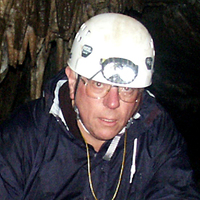
Vivi Vajda
Related Authors
Antoine Bercovici
Smithsonian Institution
Ying Cui
Pennsylvania State University
Ian Metcalfe
University of New England - Australia
Yanru(彥儒) Wu(吳)
National Taiwan Normal University
Yi-gang Xu
Guangzhou Institute of Geochemistry, Chinese Academy of Sciences
Gregory Retallack
University of Oregon
Dorte Janussen
Senckenberg Forschunginstitut und Naturmuseum
Qun Yang
Chinese Academy of Sciences
InterestsView All (11)










Uploads
Papers by Vivi Vajda
Our results show major differences in the depositional environments between the Permian Xuanwei and the Triassic Kayitou formations with a change from fluvial–lacustrine to coastal marine settings. This change is associated with a drastic modification of the preservation mode of the fossil plants, from large compressions to small comminuted debris. Plant fossils spanning the Permian–Triassic boundary show the existence of two distinct assemblages: In the Xuanwei Formation, a Late Permian (Changhsingian) assemblage with characteristic Cathaysian wetland plants (mainly Gigantopteris dictyophylloides, Gigantonoclea guizhouensis, G. nicotianaefolia, G. plumosa, G. hallei, Lobatannularia heinanensis, L. cathaysiana, L. multifolia, Annularia pingloensis, A. shirakii, Paracalamites stenocostatus, Cordaites sp.) is identified. In the lowermost Kayitou Formation, an Early Triassic (Induan) Annalepis–Peltaspermum assemblage is shown, associated with very rare, relictual gigantopterids. Palynological samples are poor, and low yield samples show assemblages almost exclusively represented by spores. A ∼1 m thick zone enriched in putative fungal spores was identified near the top of the Xuanwei Formation, including diverse multicellular forms, such as Reduviasporonites sp. This interval likely corresponds to the PTB “fungal spike” conventionally associated with land denudation and ecosystem collapse. While the floral turnover is evident, further studies based on plant diversity would be required in order to assess contribution linked to the end-Permian mass extinction versus local paleoenvironmental changes associated with the transition between the Xuanwei and Kayitou formations.
assemblage dominated by fern and bryophyte spores, with lesser gymnosperm and angiosperm pollen was recovered. Sparse fresh-water algae and marine dinoflagellate cysts were also recorded. The palynofacies is dominated by wood fragments, including charcoal, with little amorphous organic matter. The presence of some typical pollen taxa of the Wodehouseia spinata Assemblage Zone including Striatellipollis striatellus, Tricolpites microreticulatus, Leptopecopites pocockii as well as a diverse suite of Aquilapollenites,
is fully consistent with a Late Cretaceous (late Maastrichtian) age. The palynoflora indicates a local vegetation composed of a canopy of conifers dominated by Pinaceae and a minor sub-canopy of
Taxodium and cycads, as well as an understory of hydrophilous ferns, mosses and herbaceous angiosperms, indicative of a warm and humid climate e an environment where this specific hadrosaur
roamed over 66 million years ago.
of the Eslabón and Flora Formations, Subandean belt, Bolivia. The species is represented by dissociated but abundantly co-preserved megasporocarps, megaspores, microsporangia, massulae and microspores. The genus consistently characterizes warm-climate lacustrine settings. Fossil Azolla is first identified around the Early to mid-Cretaceous but the genus
apparently underwent dramatic radiation during the Late Cretaceous. Abundant Azolla remains in Bolivia add to this portrait of rapid geographic dispersal and diversification
near the close of the Cretaceous. The ranges of many Azolla species span the Cretaceous- Palaeogene boundary and the potential of Azolla to withstand altered environmental conditions, such as periodic frost damage, drought, and salinity change, and its ability to undergo rapid vegetative regeneration in association with nitrogen-fixing cyanobacterial symbionts, suggest that the survival of this group was favoured during the adverse conditions of the end-Cretaceous event.
hence it may prove an additional useful stratigraphic marker. The terrestrial palynomorph assemblage from samples within the range of Trithyrodinium partridgei includes 36 spore-pollen species dominated by the podocarp pollen Phyllocladidites mawsonii. The presence of Nothofagidites waipawaensis and Tricolpites phillipsii confirms a Paleocene age for the
assemblage. The abundance of terrestrial palynomorphs and the composition of the dinocyst assemblages suggest a marine nearshore depositional environment.
Our results show major differences in the depositional environments between the Permian Xuanwei and the Triassic Kayitou formations with a change from fluvial–lacustrine to coastal marine settings. This change is associated with a drastic modification of the preservation mode of the fossil plants, from large compressions to small comminuted debris. Plant fossils spanning the Permian–Triassic boundary show the existence of two distinct assemblages: In the Xuanwei Formation, a Late Permian (Changhsingian) assemblage with characteristic Cathaysian wetland plants (mainly Gigantopteris dictyophylloides, Gigantonoclea guizhouensis, G. nicotianaefolia, G. plumosa, G. hallei, Lobatannularia heinanensis, L. cathaysiana, L. multifolia, Annularia pingloensis, A. shirakii, Paracalamites stenocostatus, Cordaites sp.) is identified. In the lowermost Kayitou Formation, an Early Triassic (Induan) Annalepis–Peltaspermum assemblage is shown, associated with very rare, relictual gigantopterids. Palynological samples are poor, and low yield samples show assemblages almost exclusively represented by spores. A ∼1 m thick zone enriched in putative fungal spores was identified near the top of the Xuanwei Formation, including diverse multicellular forms, such as Reduviasporonites sp. This interval likely corresponds to the PTB “fungal spike” conventionally associated with land denudation and ecosystem collapse. While the floral turnover is evident, further studies based on plant diversity would be required in order to assess contribution linked to the end-Permian mass extinction versus local paleoenvironmental changes associated with the transition between the Xuanwei and Kayitou formations.
assemblage dominated by fern and bryophyte spores, with lesser gymnosperm and angiosperm pollen was recovered. Sparse fresh-water algae and marine dinoflagellate cysts were also recorded. The palynofacies is dominated by wood fragments, including charcoal, with little amorphous organic matter. The presence of some typical pollen taxa of the Wodehouseia spinata Assemblage Zone including Striatellipollis striatellus, Tricolpites microreticulatus, Leptopecopites pocockii as well as a diverse suite of Aquilapollenites,
is fully consistent with a Late Cretaceous (late Maastrichtian) age. The palynoflora indicates a local vegetation composed of a canopy of conifers dominated by Pinaceae and a minor sub-canopy of
Taxodium and cycads, as well as an understory of hydrophilous ferns, mosses and herbaceous angiosperms, indicative of a warm and humid climate e an environment where this specific hadrosaur
roamed over 66 million years ago.
of the Eslabón and Flora Formations, Subandean belt, Bolivia. The species is represented by dissociated but abundantly co-preserved megasporocarps, megaspores, microsporangia, massulae and microspores. The genus consistently characterizes warm-climate lacustrine settings. Fossil Azolla is first identified around the Early to mid-Cretaceous but the genus
apparently underwent dramatic radiation during the Late Cretaceous. Abundant Azolla remains in Bolivia add to this portrait of rapid geographic dispersal and diversification
near the close of the Cretaceous. The ranges of many Azolla species span the Cretaceous- Palaeogene boundary and the potential of Azolla to withstand altered environmental conditions, such as periodic frost damage, drought, and salinity change, and its ability to undergo rapid vegetative regeneration in association with nitrogen-fixing cyanobacterial symbionts, suggest that the survival of this group was favoured during the adverse conditions of the end-Cretaceous event.
hence it may prove an additional useful stratigraphic marker. The terrestrial palynomorph assemblage from samples within the range of Trithyrodinium partridgei includes 36 spore-pollen species dominated by the podocarp pollen Phyllocladidites mawsonii. The presence of Nothofagidites waipawaensis and Tricolpites phillipsii confirms a Paleocene age for the
assemblage. The abundance of terrestrial palynomorphs and the composition of the dinocyst assemblages suggest a marine nearshore depositional environment.